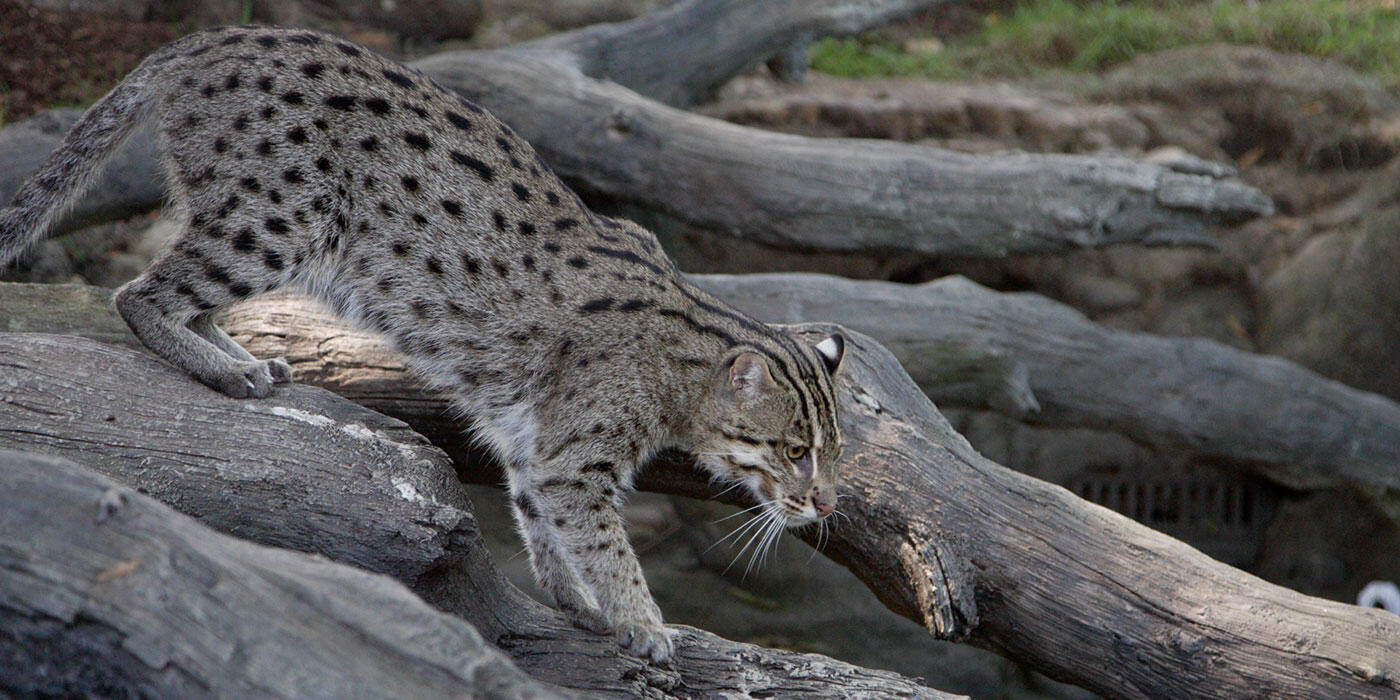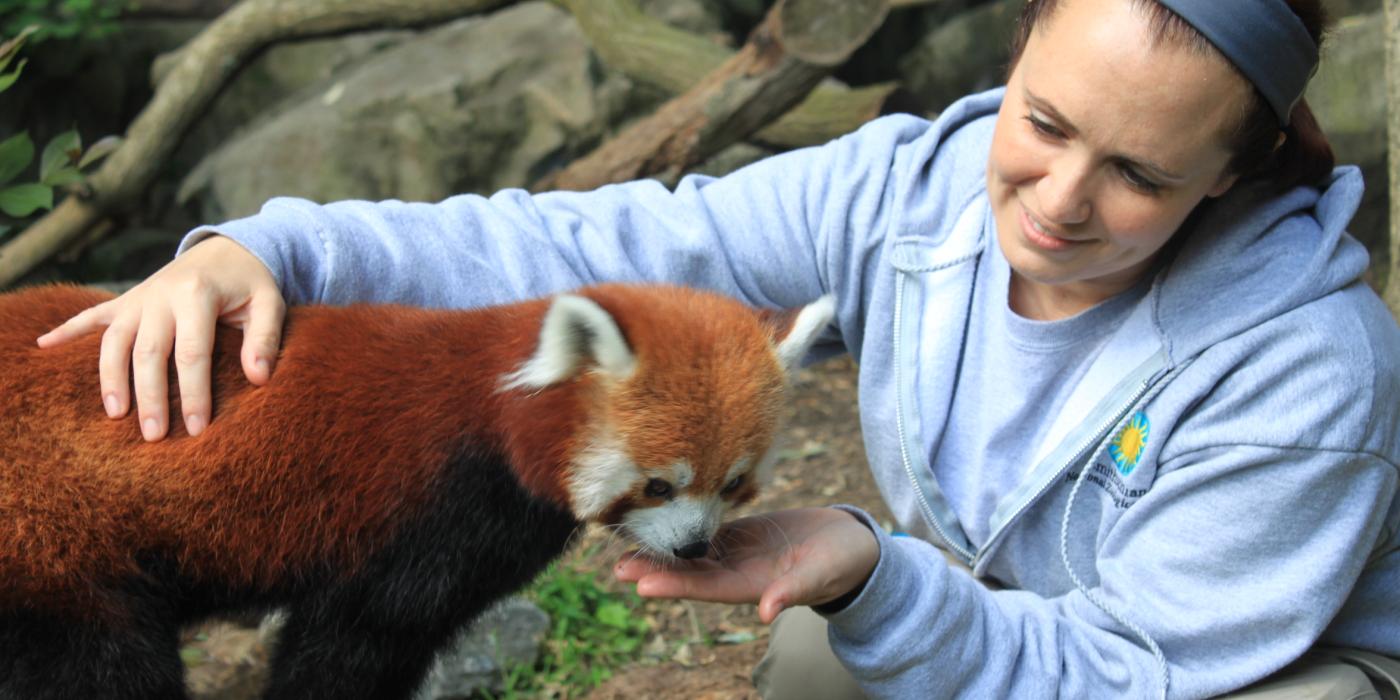Fishing Cat Study Looks to Improve Breeding Success Rates
As Numbers in the Wild Decrease, More Kittens in Zoos Could Help the Entire Species
Fishing cats are vulnerable in the wild across South and Southeast Asia, and sightings by scientists are few and far between. There are not many of the small spotted cats living in zoos either, which could spell trouble for the entire species. Pressures from human development and pollution are driving wild fishing cat numbers down further, which means that a healthy population of fishing cats living in zoos is more important than ever. Unfortunately, breeding fishing cats in zoos has proven just as difficult as studying and protecting them in the wild. But a new study might change that.
The study by Smithsonian's National Zoo and Conservation Biology Institute scientists and researchers from George Mason University published in Zoo Biology identified several things zoos can do to encourage fishing cats to breed and prevent their numbers from dwindling. To gather the best data, the team monitored fishing cats living in zoos in North America for three years as they were moved to new homes in different zoos and then introduced to potential mates. All of the animals were moved at the recommendation of the Species Survival Plan (SSP).
When the SSP recommends two fishing cats to breed, the first step is moving the cats to the same zoo. More than half of the time zoos elected to move a male who had been given a breeding recommendation rather than a female. This mimics what happens in the wild. Females typically have a set territory, whereas males wonder around looking for females to mate with.
The timing of the transfers also mimicked seasonal breeding cycles. Sixty-two percent of the transfers occurred during autumn.
After a male cat moves, researchers found that it was important to give him time to adjust to his new home before introducing him to his potential mate—on average about three months.
Based on these findings, the scientists proposed that fishing cats should move in late spring or early summer. That would allow ample time for the cat to adjust to his or her new environment before being introduced, and still allow for introductions when the female is most receptive.
In addition to allowing more time for adjustment, the scientists found that zoos that incorporated formal training sessions at least 10 days a month were more successful at breeding fishing cats. Training is one way to develop a positive animal keeper relationship, which can improve overall welfare by giving the animal more control over their care. Animals who had the choice to spend time on exhibit or in off-exhibit enclosures were more likely to breed successfully. Most cats are secretive, and a private area may help them to feel more comfortable during a vulnerable time when they are meeting a new mate.
Another indicator of success was friendly vocalizations between the fishing cats. For many animals, communication is key to a successful pairing. Cats can communicate information about their reproductive status with both vocalizations and scent markings. Scientists also noted that fishing cats have rigid pairing. Breeding pairs should be given approximately one-year as a trial period, and if the pair has not expressed appropriate breeding behaviors a new match should be made.
The final puzzle piece to increasing the population will be the role of zoos. They will have to collaborate and prioritize the species to create a self-sustaining population that will serve as an insurance population for the wild.
With this in mind, the scientists recommended that breeding pairs of fishing cats should move to zoos that can house multiple pairs. This way, the mates can be easily switched around to determine compatibility.
Fishing cats both help to control pests and indicate healthy water systems in their natural habitat. Since their presence is an important indicator of how an ecosystem is faring, the more zoos can learn about the intricacies of breeding them, the easier it will be to build a healthy population.
Lead researcher Jilian Fazio said that though this study was a great starting point, more research is needed to uncover the many mysteries of the rare and fascinating fishing cat.
Related Species:




